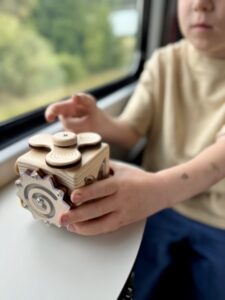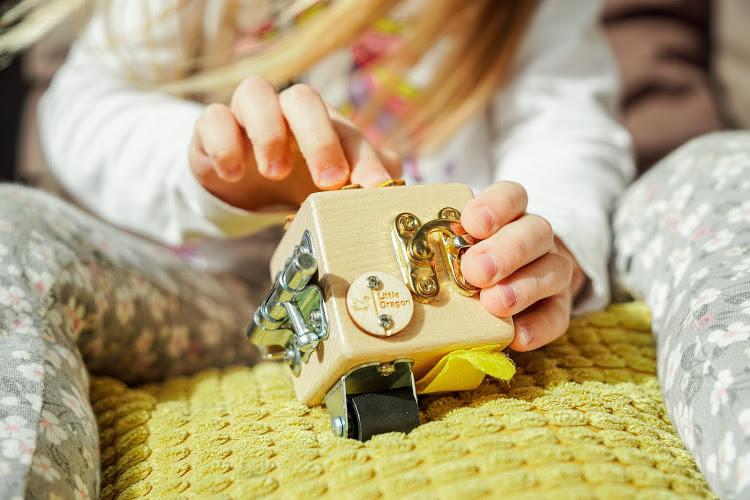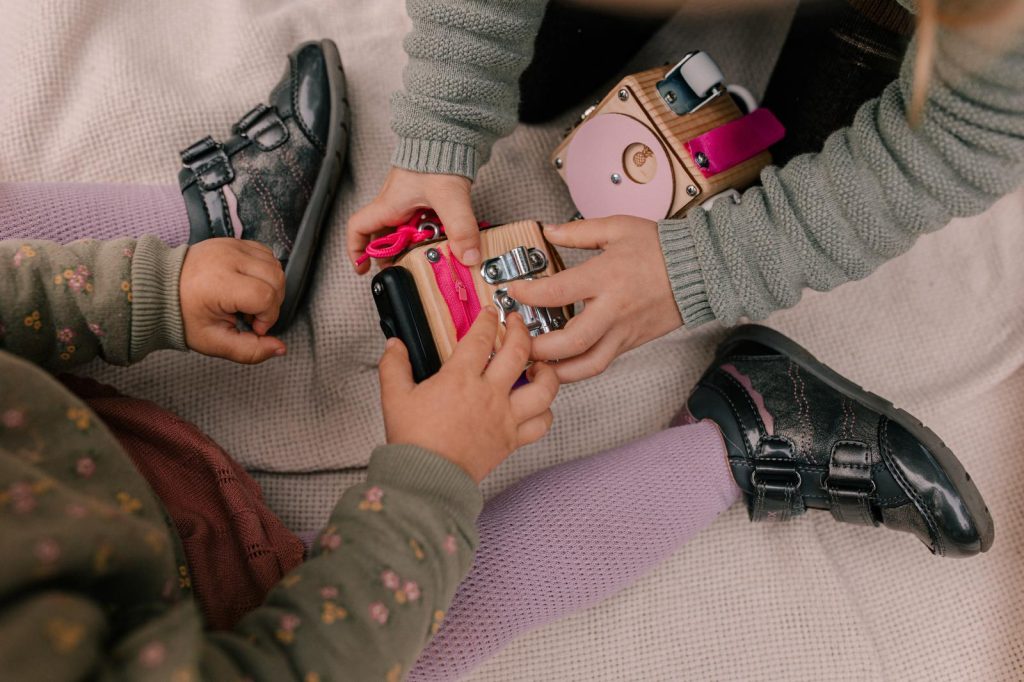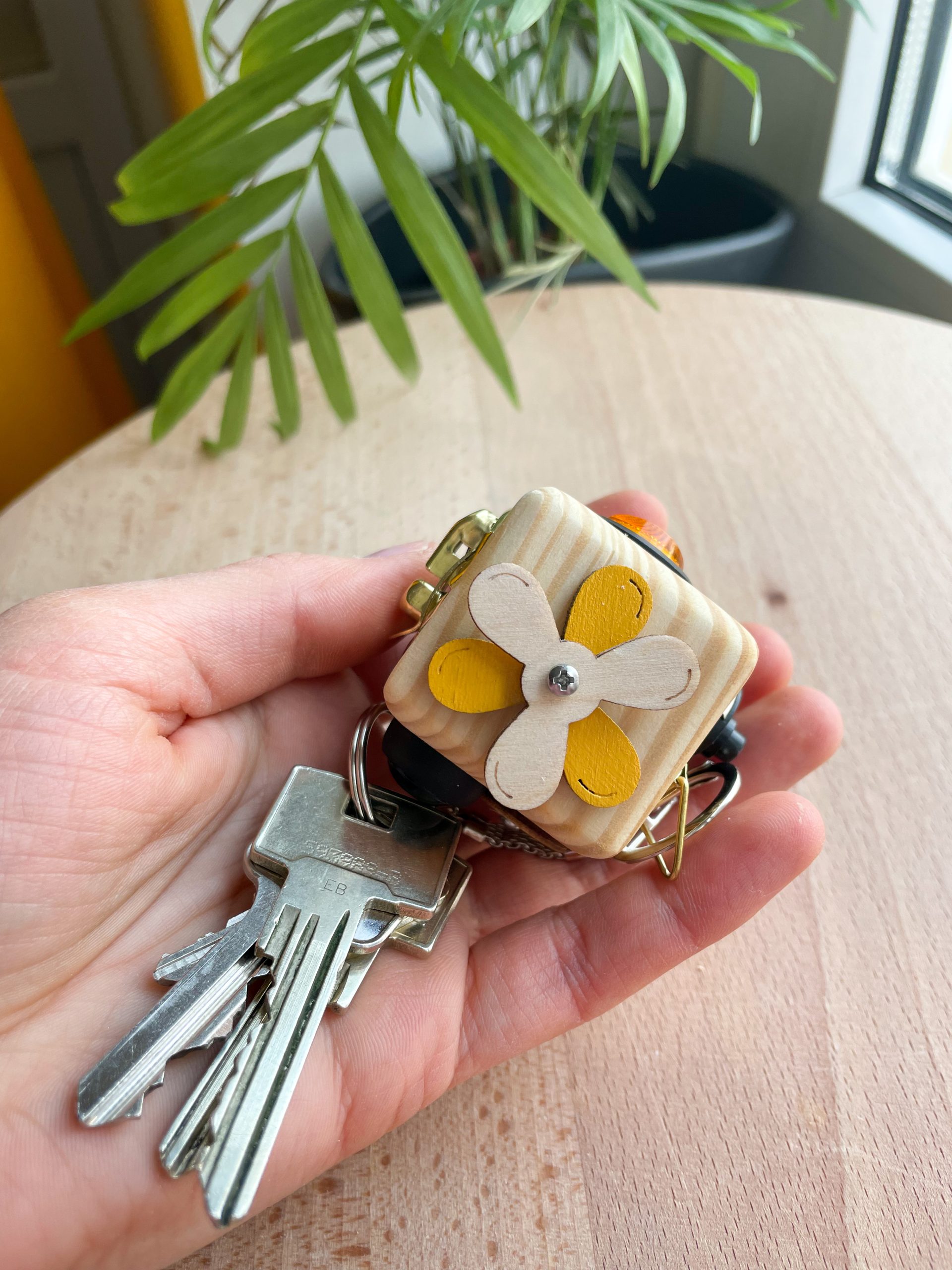
Toys for the airplane – what will occupy the child during the trip?
Traveling with a child is a challenge, especially on an airplane, where space is limited

Small motor skills are the ability to make precise movements with the hands and fingers, which is crucial for children’s development. Developing these skills is of great importance, as it affects everyday activities such as writing, buttoning buttons and tying shoes. Sensory toys that engage the senses and stimulate hand movements are an excellent tool to promote fine motor development in children. In this article, we will discuss the different types of sensory toys that can be found in toy stores, and their impact on a child’s development.
Small motor skills refer to the ability to make precise movements with the hands and fingers. It is a critical skill for many daily activities, such as writing, drawing, dressing, eating and playing. In fact, the development of fine motor skills is an important aspect of a child’s development, affecting his ability to function and learn independently.
Sensory toys are specially designed to stimulate a baby’s senses – sight, hearing, touch, smell and taste – as well as develop his motor skills. The benefits of using sensory toys include:
Manipulative boards are toys that contain various elements to move, open, close, rotate or press. They are excellent for developing motor skills and hand-eye coordination.
Sensory cubes are toys that have different textures, colors and elements that children can touch, squeeze and manipulate. In fact, they are ideal for stimulating the senses and developing small motor skills.
Puzzles and puzzles are a great tool for developing fine motor skills and logical thinking skills. In fact, they require precise hand and finger movements, which helps develop hand-eye coordination.
Montessori toys are designed according to the principles of Montessori pedagogy, which emphasizes independent discovery and experiential learning. These toys often use natural materials, such as wood, and are designed to promote fine motor development.
Wooden toys Are durable, eco-friendly and environmentally friendly. They often have simple but clever designs that promote the development of small motor skills.
Wooden manipulative tablet can be a great tool to promote the development of small motor skills if used properly. This type of tablet offers a variety of interactive elements, such as sliding blocks, rotating wheels and insertable figures that children can manipulate. Thanks to its solid, natural wood construction, the tablet is durable and safe for the little ones. In fact, using the wooden educational tablet helps children develop hand and finger precision, hand-eye coordination and cognitive skills by solving simple puzzles and tasks. It is a perfect combination of traditional play with a modern approach to learning that supports the child’s development on many levels.
Sensory keychains are small, portable toys that children can carry with them anywhere. They can come in a variety of textures, shapes and colors, making them ideal for stimulating the senses on the go. As a result, thanks to their compact size and variety of stimuli, sensory keychains help children develop their senses while offering entertainment and occupation during travel or daily activities.

The best toys for infants are those that stimulate the senses and promote the development of basic motor skills. These can include rattles that emit sounds when shaken, soft toys with different textures that children can explore by touch, and simple sensory cubes that engage sight and touch. These toys actually help develop motor coordination and teach infants how different objects respond to touch and movement.
Toys for 2-year-olds should be more advanced and engaging. For example, good options include manipulative boards that offer a variety of pieces to move, open and close, simple puzzles and jigsaw puzzles that teach logical thinking, and Montessori wooden toys that promote the development of fine motor skills and hand-eye coordination. These toys not only entertain, but also help develop cognitive and manual skills.
For older children, it’s a good idea to choose toys that still promote fine motor development, but are more complex. These can include more advanced puzzles that require more precision and patience, construction sets that develop engineering skills and spatial thinking, and an educational tablet with relevant apps that teach through interactive games and tasks. In addition, such toys stimulate intellectually and support the child’s ongoing development.
Sensory integration therapy (SI) is a therapeutic method used with children who have difficulty processing sensory stimuli. In fact, the goal of therapy is to improve the child’s ability to respond to external stimuli in an appropriate and organized manner.
Sensory toys play a key role in SI therapy, helping children process stimuli and develop motor skills. Therapists often use manipulative boards, sensory cubes and other toys to stimulate a child’s senses and promote development.
In conclusion, when choosing sensory toys, it is worth paying attention to several key aspects:
Sensory toys are toys designed to stimulate a child’s various senses, such as sight, hearing, touch, smell and taste. They help develop motor and cognitive skills.
Sensory toys promote the development of a child’s fine motor skills, hand-eye coordination, concentration and cognitive abilities. They are also a great tool in sensory integration therapy.
The best toys for a 2-year-old include manipulative boards, simple puzzles and jigsaw puzzles, Montessori wooden toys and sensory cubes. These toys help develop motor skills and logical thinking.
Montessori toys, such as wooden puzzles, shape sorters and manipulative boards, are ideal for promoting fine motor development. They encourage children to explore on their own and learn through play.
Wooden toys are often more durable, environmentally friendly and safer than plastic ones. They have natural textures that can be more attractive and stimulating for children.

Traveling with a child is a challenge, especially on an airplane, where space is limited

Choosing the right gift for a 2-year-old boy can be a challenge, especially when you

In today’s busy world, more and more people are looking for ways to reduce stress
| Cookie | Duration | Description |
|---|---|---|
| cookielawinfo-checkbox-analytics | This cookie is set by GDPR Cookie Consent plugin. The cookie is used to store the user consent for the cookies in the category "Analytics". | |
| cookielawinfo-checkbox-functional | The cookie is set by GDPR cookie consent to record the user consent for the cookies in the category "Functional". | |
| cookielawinfo-checkbox-necessary | This cookie is set by GDPR Cookie Consent plugin. The cookies is used to store the user consent for the cookies in the category "Necessary". | |
| cookielawinfo-checkbox-others | This cookie is set by GDPR Cookie Consent plugin. The cookie is used to store the user consent for the cookies in the category "Other. | |
| cookielawinfo-checkbox-performance | This cookie is set by GDPR Cookie Consent plugin. The cookie is used to store the user consent for the cookies in the category "Performance". | |
| viewed_cookie_policy | The cookie is set by the GDPR Cookie Consent plugin and is used to store whether or not a user has consented to the use of cookies. It does not store any personal data. |